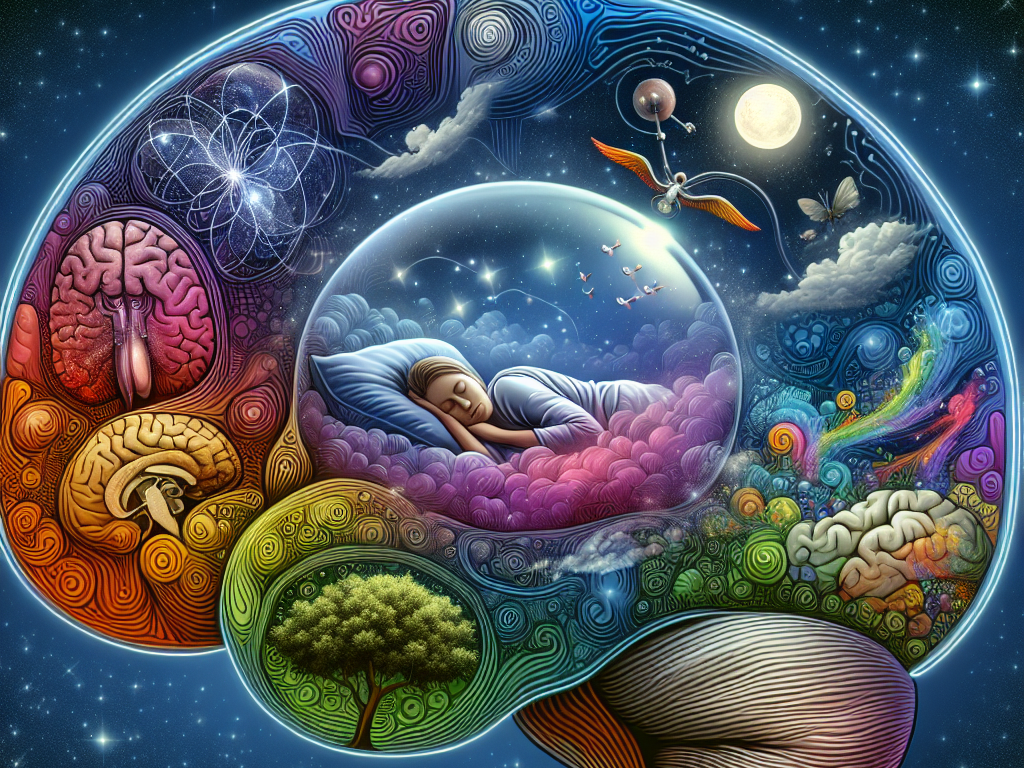
Despite many breakthroughs in scientific research, the human brain remains the most complex thing that we know of. It’s not clear whether we will ever be able to grasp the complexity of it – but the scientists keep on trying.
Among other subjects of the human mind, the nature of dreams is still not well understood. Some believe they’re completely random and should be ignored. Others think there’s an underlying meaning that can be derived from analyzing them. Others still insist there’s something other-worldly about them. A consensus may never be reached.
Applying the scientific method to something so unique and subjective is not easy. Still, the number of studies regarding dreams has increased tremendously over the last few decades. Lately, there’s also been a surge of scientific research on lucid dreams (LD). Let’s explore some of them.
Lucid dream induction: WBTB and MILD
It has been known that lucid dreams are difficult to induce even if the person has immense dedication. It can take weeks or months until a person finally succeeds in having a conscious dream.It’s not in any way impossible – it simply requires practice and devotion.
However, it appears that lucid dreaming can be induced in a much shorter time span.
In a recent study (2020), scientists adapted the existing induction techniques with a self-developed experiment protocol. They managed to replicate an induction of a lucid dream to half of the participants in at least one of the two nights the study was conducted.
The lucid dreaming experience was novel to the subjects – they were untrained and had never tried to lucid dream before!
In 8 cases out of 20, lucidity in a dream was even verified via an eye signal. Five subjects have also managed to conduct a given task – fly around in their dream.
Now, what’s the magic method? Nothing novel here. Researchers relied on the Wake Back to Bed (WBTB) technique – subjects were woken up after 6 hours of sleep during the REM stage, engaged in a series of cognitive tasks to keep their minds busy, and went back to sleep, performing Mnemonic Induction of Lucid Dreams (MILD).
This study is astonishing because half of the subjects achieved controlled dreaming in just two nights, with no prior training. This ought to give motivation to anyone striving to have their first conscious dreaming experience.
The results were similar in a study conducted by Daniel Erlacher and Tadas Stumbrys (2020). The participants spent one night in a sleep laboratory and performed the WBTB technique together with MILD.
- In the two groups who had a 60 minute wake-up period, 54 and 53 percent of subjects managed to have a lucid dream.
- In the group where a shorter period was used (30 minutes), 36 % of participants had a lucid dream.
- Finally, a control group was also tested twice. Only one participant (9 %) had a lucid dream the first night, while no subjects had a lucid dream in the second. Instead of MILD, they read a book (first night) or played a Nintendo Wii video game (second night).
Another study, performed by Schredl, M., Dyck, S., and Kühnel, A. (2020), concluded that the WBTB is also quite effective in a home environment. Participants with no LD experience performing the technique had a much higher chance (18 %) to have a lucid dream than those who did not (6 %). Out of 50 subjects, half of them experienced at least one lucid dream in a 5-week period.
The research suggests that the WBTB combined with MILD is a very effective method of inducing lucid dreams. On the other hand, it is ineffective when MILD is not used.
It also appears that the optimal time frame to be awake before going back to bed is 60 minutes.
The limitations of lucid dreaming
We’ve said it many times – conscious dreams are limitless in the possibilities they offer.
Some scientists wanted to test the theory to some extent.
Zhunusova, Z., Raduga, M., and Shashkov, A. (2021) recruited experienced lucid dreamers and asked them to fly in their conscious dreams without performing any other action (like jumping). Then they were asked to report:
- Whether they succeeded,
- How much effort was required,
- The flight duration.
Most of the subjects succeeded with little to no effort – implying that the rules and laws of physics can be overcome in a controlled dreaming environment.
Of course, this is nothing new to an experienced lucid dreamer.
However, other research suggests some limitations to what one can manifest during a conscious dream. Remington Mallet (2020) found out that it is pretty difficult for dreamers to reinstate waking scene memories while dreaming.
Analysis revealed that the scenery created in the dream was overwhelmingly inaccurate with regard to the original experimental scene.
Interestingly, the inaccuracies persisted even if the dreamer was aware of them – suggesting that part of our memories are inaccessible while dreaming.
Cloé Blanchette-Carrière and others (2020) were unsuccessful at inducing lucid dreams by stimulating the brain during sleep. Even though previous research suggested that these stimulations can be successful, the most recent study found no difference between the studied and controlled groups. They conclude that:
“Neurophysiological correlates of self-awareness during sleep (‘lucid dreaming’) remain unclear despite their importance for clarifying the neural underpinnings of consciousness.”
Communication with the dreamer
Previous studies proved that a person could communicate while in a lucid dream via eye-signaling. However, the communication was thought to be one-sided – that is, it was believed to be impossible for the dreamer to perceive the outside world.
Recent studies suggest otherwise.
Karen R. Konkoly and others (2021) have managed to communicate with dreamers while they are dreaming. Participants were presented with math problems and yes-no questions. They managed to perceive the questions and answer them in real-time with voluntary eye movements or facial muscle signals!
The results were later replicated by Baird B., LaBerge S., and Tononi G. (2021).
Many frontiers still await us in the future. A new surge of research concerning (lucid) dreams may give us the answers we seek. On the other hand, it may raise even more questions.

.png)


